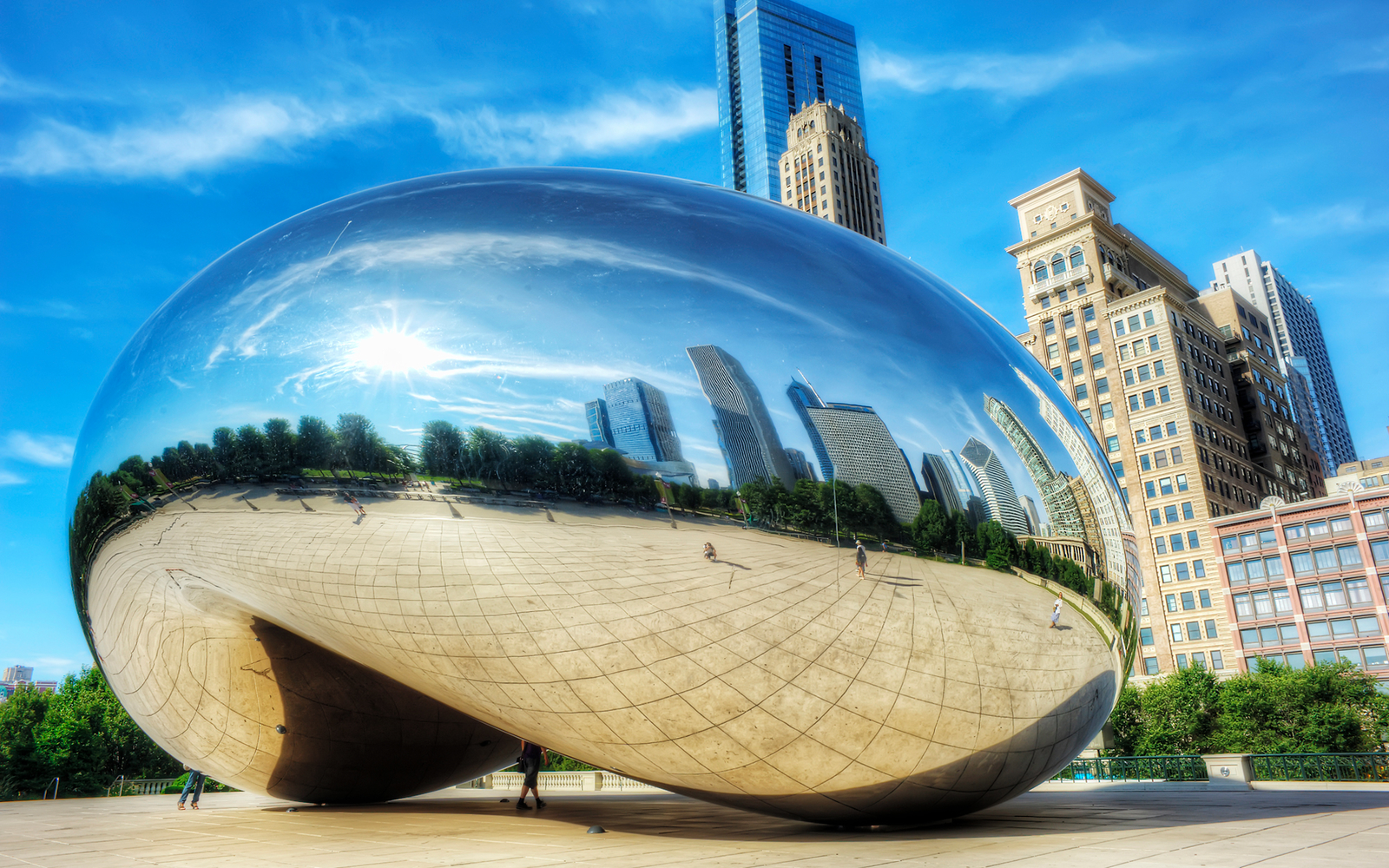
The Windy City is full of attractions that keep the crowds coming all year round. But are they all worth it? Here's our list of what you could pass up and where to go instead.
For someone looking to get to the heart of Chicago, the first thing they should know is that it doesn't all center around Michigan Avenue. The Loop and its landmarks definitely have their charms, but to travel like a local, branch out into the city's neighborhoods and hidden spots, and don't feel guilty about skipping these well-trod activities.
Unless you're deliberately photobombing hundreds of tourists carrying selfie sticks, the novelty of The Bean's reflective curves can start to look more like a funhouse mirror than a fascinating reflection of the Chicago skyline. Instead, walk around Tribune Tower. There may not be any crazy mirror-like surfaces, but the 120 stones embedded in the concrete along the building's perimeter are eye-opening in their own way. Sourced from significant sites around the world, they're dated and note their provenance, whether they trace their origins to London's Westminster Abbey, Moscow's the Kremlin, or the Great Pyramid of Giza, Egypt.
At this time of year, it's too crowded, too expensive, and a little too uniform. Head for Clark Street in Andersonville instead. The Swedish-centric neighborhood is high in local flavor. Not only does it have the phenomenal Swedish Bakery, but there's an array of funky boutiques and indie shops, such as Akira, which stocks women's clothing and accessories from hip but affordable brands like Sam Edelman and Gracia; Room Service for expertly selected Midcentury Modern furniture and decor; and Jameson Loves Danger for all your pet needs.
Not that we have anything against this iconic landmark, it's just that Navy Pier has become less about history and more about city-branded tourist shops. Try heading south to visit the Pullman Historic District. What was once a planned industrial town for George Pullman, the creator of the famous Pullman sleeper cars on trains, has become a historical village of about 7,500 people that offers tours of the community that feel like a walk back in time—almost all of the original 1880s housing and many original public buildings still populate the district today.
Even if you're still sour about the city getting robbed of the Sears Tower moniker, SkyDeck has unparalleled views of Chicago. But it's also swarming with tourists and unattended children. Locals go to 360 Chicago, the observation deck at the John Hancock building, which offers fewer crowds and just as commanding views.
If you don't want your views of the Botanic Garden's stunning displays interrupted by nearly every group of suburban schoolchildren in northern Illinois, head farther south to a different garden. At the Garfield Park Conservatory, a beautiful world of flowers and stone walkways under a historic glass building, there are twelve acres of outdoor gardens and paths, waterfalls, fountains, and art.
Granted, Vosges has some delicious goods. But the chocolate bacon bar is pretty overdone at this point—along with several other of the store's unique flavors. At privately owned chocolatier Veruca Chocolates in Bucktown (named for the Willy Wonka character), every piece is handmade and looks like a miniature artwork, from the gilded champagne truffles to the technicolor turtles. Bonus: they specialize in gourmet s'mores.
Although it's home to historic Wrigley Field, this North Side neighborhood also is a haven for rowdy fans and over-served college kids. The neighborhood to explore these days is Pilsen. It's a cultural powerhouse famous for its public art and murals, young Chicagoan-owned businesses, unique shops (Accent Minded, Shudio), and quirky art and music experiences (Thalia Hall, Redmoon Central, National Museum of Mexican Art).